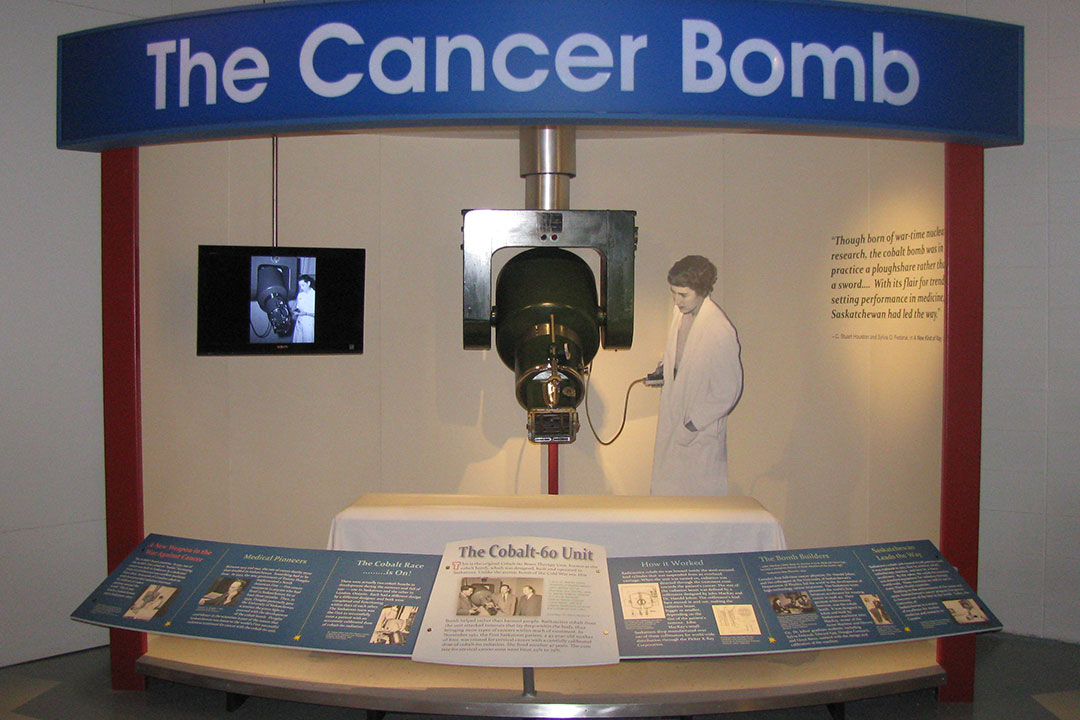October 1951: Cobalt-60 therapy begins
Nuclear medicine was a relatively new field when the world’s first calibrated cobalt-60 therapy unit opened on campus in October 1951. The machine was designed by Harold Johns—Canada’s first full-time cancer physicist and head of the physics department at the University of Saskatchewan—and built by John MacKay, owner of Acme Machine and Electric Co. in Saskatoon.
The machine used a radioactive source of cobalt and delivered it to patients using high-intensity radiation. The first patient, a 43-year-old mother of four, was treated for cervical cancer in November 1951, with a carefully calibrated dose of cobalt-60 radiation. She lived another 47 years.
Working alongside Johns was a bright scholar named Sylvia Fedoruk. During her esteemed research career, she developed the dosimeter, which allowed physicians to regulate the dose of radiation for each patient. She also developed a device that used radioactive iodine to determine if a patient’s thyroid was cancerous.
Saskatoon’s cobalt-60 therapy unit treated more than 6,700 patients until it was replaced in 1972, first by another cobalt radiotherapy machine, and later by a linear accelerator. By the 1960s, the cobalt-60 machine was standard equipment for radiation therapy worldwide. The technology has revolutionized cancer treatment and saved the lives of millions of cancer patients. By the end of the century, it was estimated that cobalt-60 therapy had helped more than 70 million people.
The original cobalt-60 machine is permanently housed at the Western Development Museum in Saskatoon.
With files from University Archives and Special Collections.
